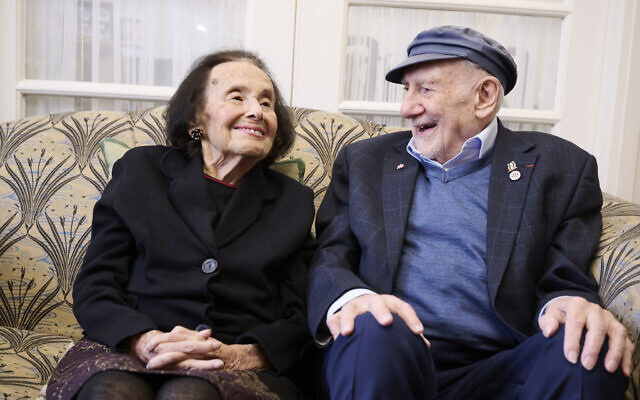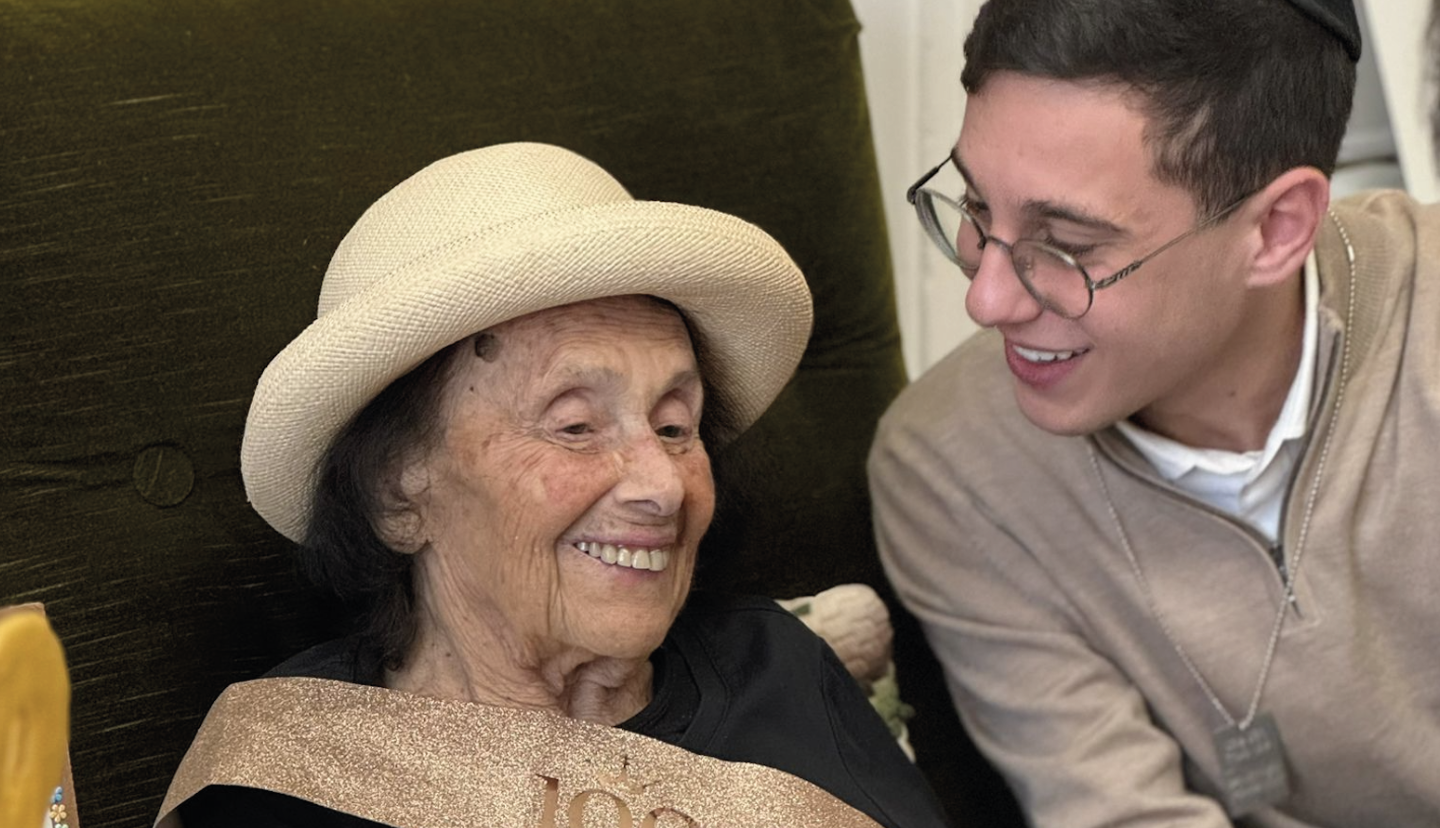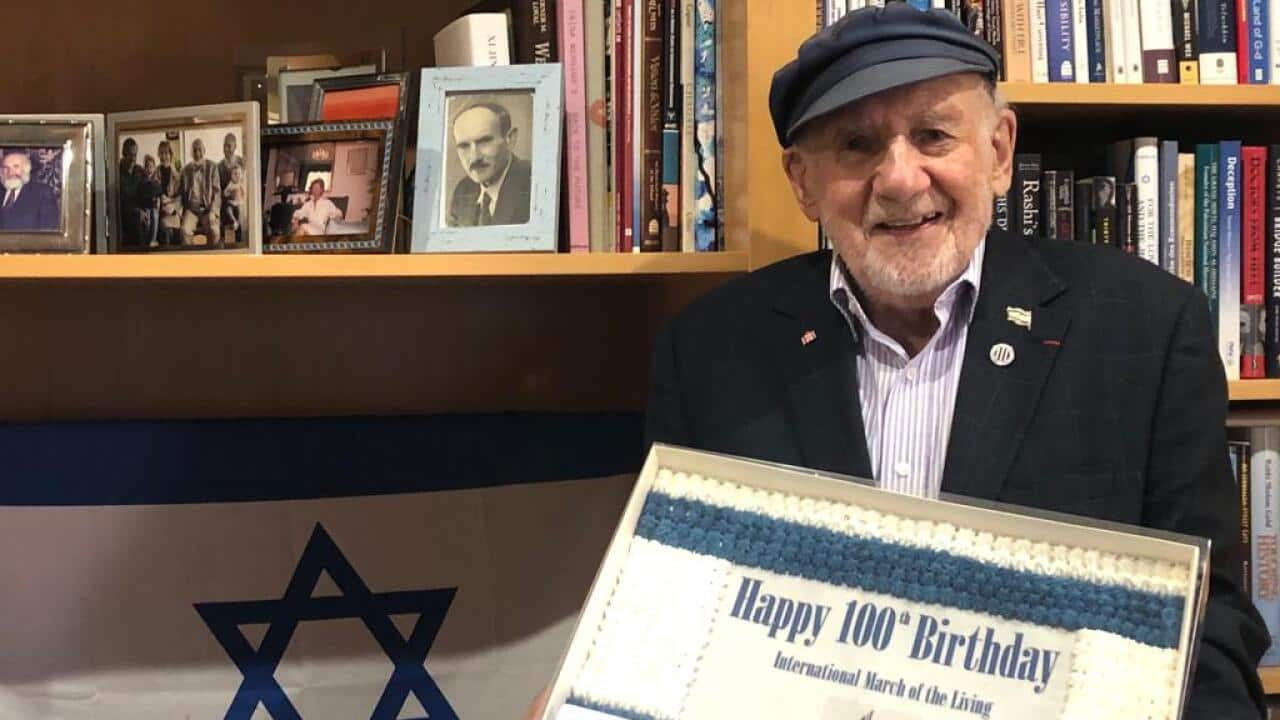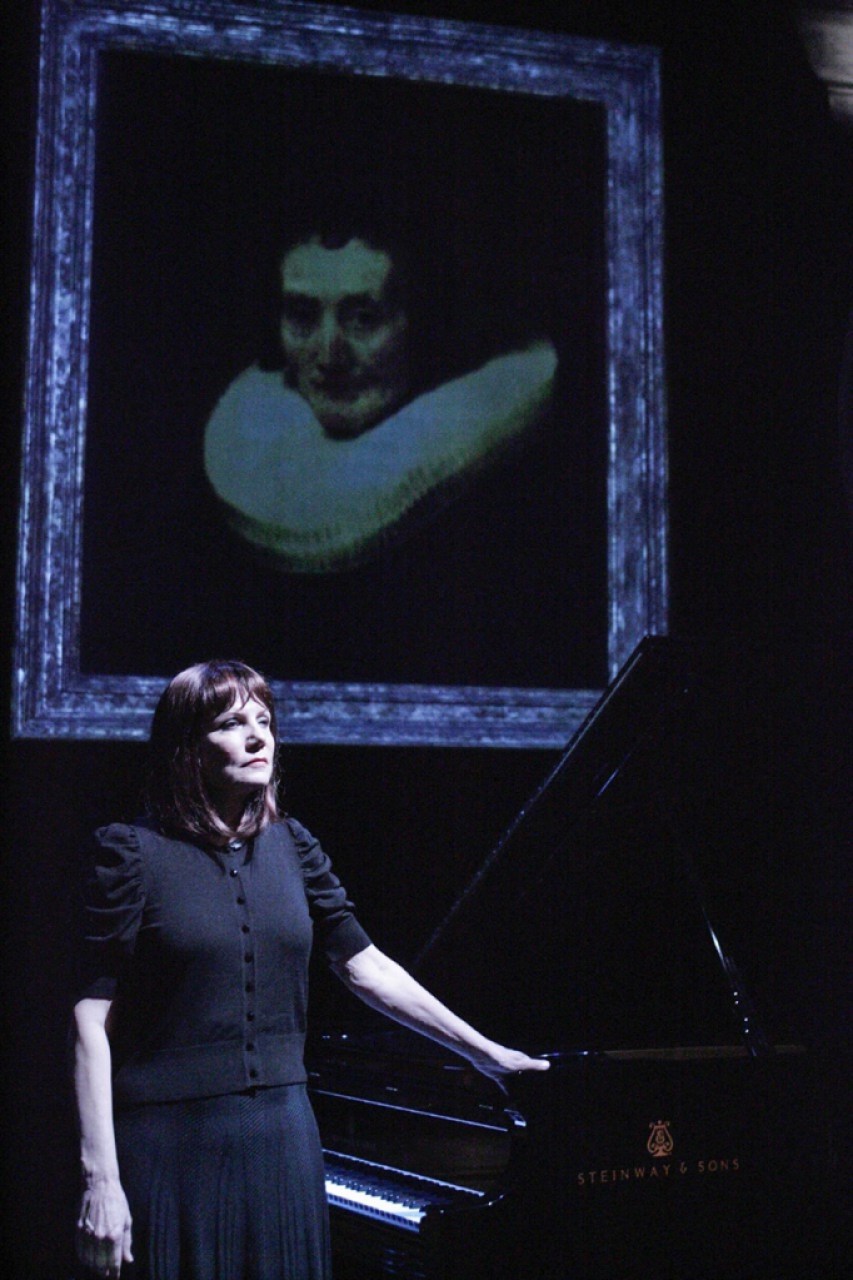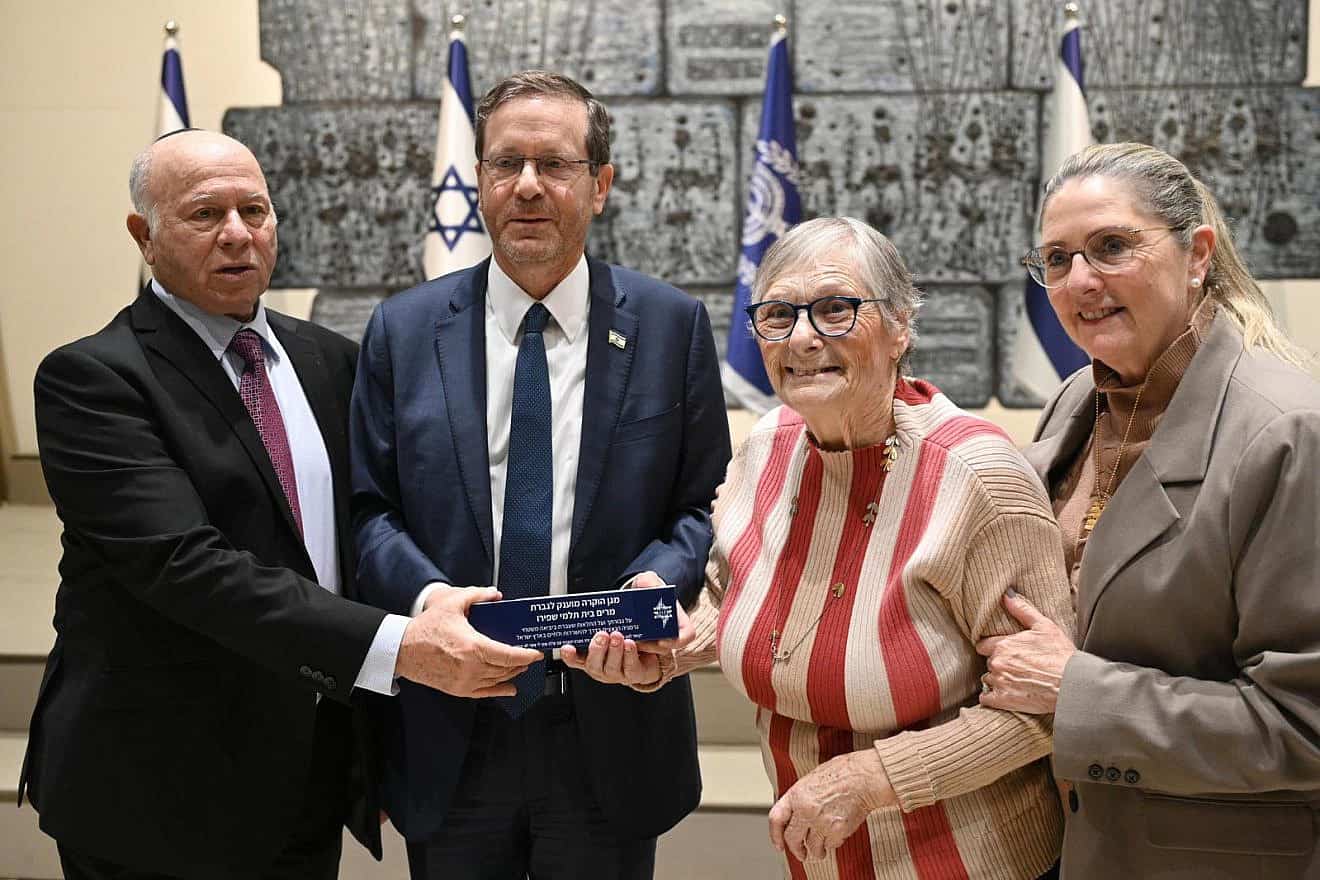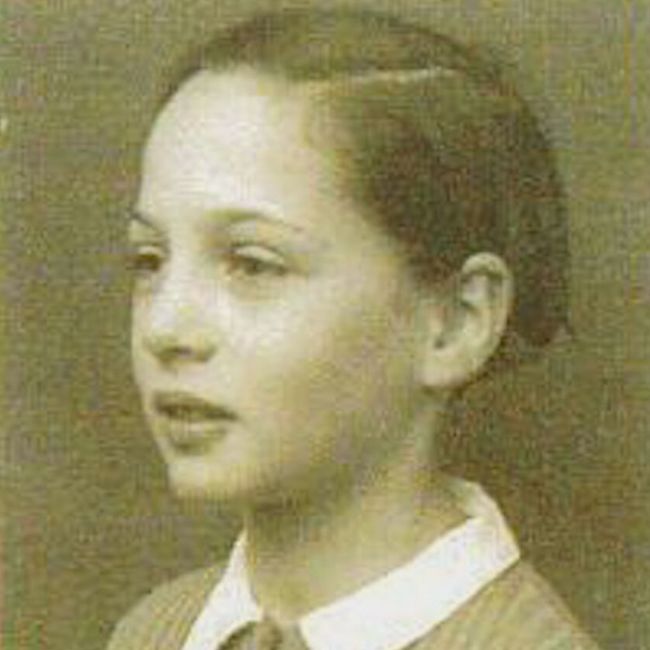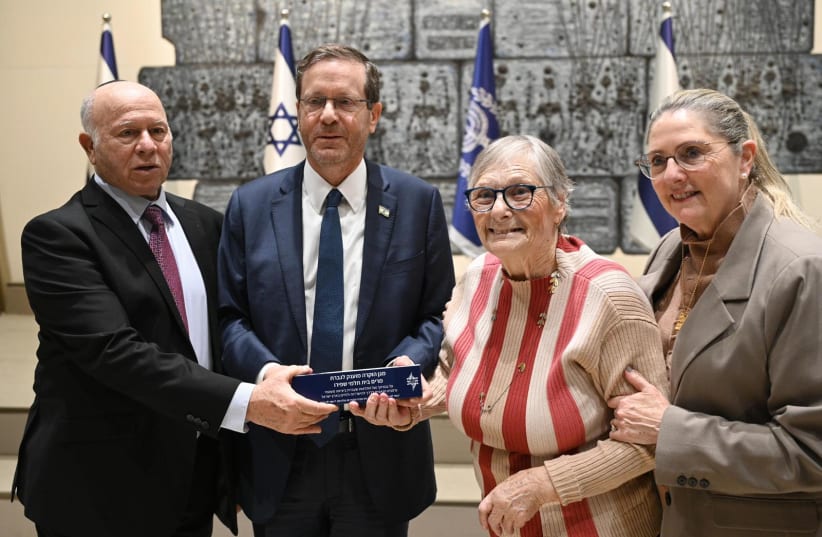At the time, Rabbi Schonfeld was doing the bidding of his mentor from his days in the Nitra yeshivah, Rav Michoel Ber Weissmandl, who begged him to bring out as many children as possible and put them in the schools Rabbi Schonfeld was running in London.
The young rabbi used his clout as presiding rabbi of the Union of Orthodox Hebrew Congregations and executive director of the newly formed Chief Rabbi’s Religious Emergency Council under the auspices of his future father-in-law, Chief Rabbi Joseph Hertz (he would marry Judith Helen Hertz in 1940), in order to convince the British government to waive all visa requirements and not put a cap on the number of refugee children entering the country, as long as there were trains to transport them.
Following Rabbi Schonfeld’s initiative, Kindertransports seemed to take on a life of their own. With tireless organization, bravery and unending dedication, over two dozen groups and private activists worked in parallel, and in the nine months prior to the outbreak of World War II, the UK took in nearly 10,000 children from Nazi-controlled territory — Germany, Austria, Czechoslovakia, and parts of Poland. The children, who were placed in British foster homes, hostels, schools, and farms, were often the only members of their families who survived the Holocaust.
For Rabbi Schonfeld though, that initial rescue work was just the beginning. For the next ten years, this remarkable Holocaust hero went on to rescue thousands of Jews, breaking every rule in the book as he practically singlehandedly brought several thousand youngsters, as well as rabbis, teachers, shochtim, and other religious functionaries to England, doing his best to provide his charges with kosher homes, Jewish education, and jobs. He had no problem bending the rules all the way if it meant saving a Jewish life – and so, for example, any Jewish man became a tzitzis knotter or kashrus supervisor or shul shamash in order to get a visa and a temporary “paid” job (sometimes paid by the Religious Emergency Council).
During the war, time and again he urged the British government to bomb Auschwitz; and at the war’s end, he repeatedly traveled back to the devastation to bring child and adult survivors to England — wearing a military-style uniform he created himself to give the impression that he was an army officer. For the next few years, he recovered hidden children and spirited many others away from Communist Eastern Europe.
Rabbi Dr. Schonfeld passed away in Adar 1984 (on his 72nd birthday), and in honor of his 40th yahrtzeit this week, four long-ago Jewish refugees who’ve been living in the UK for eight decades — just children at the time, who owe their survival to his and other Kindertransport initiatives — share their stories
The Ones Left Behind
MR. ALF BUECHLER
I think I was the last bar mitzvah in Gleiwitz before they destroyed the shul on Kristallnacht
Iwas born in the place where it all started, the Polish town of Gleiwitz in Upper Silesia, close to the German border. Gleiwitz is actually where World War II began. On August 31, 1939, Nazi forces posed as Poles to stage a “false flag” attack on Gleiwitz’s German radio station. By the morning of September 1, Hitler was already using the faked attack — called the “Gleiwitz incident” to justify his invasion of Poland. War had begun.
I went to a Jewish elementary school until age 11, and then a state secondary school, where we Jews had to sit at the back. When the teacher came in, the class stood up and greeted him with a shout of “Heil Hitler!” Then they recited a prayer in German. I remember my parents cautioning me, “If you see any groups marching with the Nazi flag, don’t show your face. Go and hide in a shop. Because if you don’t answer the Hitler salute, they’ll beat you up.”
My bar mitzvah was held in Gleiwitz’s synagogue on Parshas Balak, in July of 1938. I think I was the last bar mitzvah boy there, because the shul was burned down on Kristallnacht. We lived nearby and on the morning of November 10th, I saw our shul building smoking, burned out.
On a farm not too far from Gleiwitz, my older brother Kurt was part of a group doing “hachsharah,” learning farming and irrigation techniques in preparation for travel to Palestine. On Kristallnacht, they were all arrested and taken to Buchenwald. My father, who was also arrested and deported, met Kurt in Buchenwald.
At that stage, Jews could still leave Germany — but only if they had somewhere to go. My mother turned to a relative in London, Rabbi Dr. Adolf Buechler, principal of Jews College, who agreed to pay 50 pounds sterling (a substantial sum at the time) to bring Kurt out of Germany. So in the last days of 1938, my brother was released from Buchenwald on condition that he would leave the country within 24 hours. He looked terrible — still wearing the same clothes he had been arrested in weeks before, and his head shaven. We said our goodbyes, and Kurt left.
Realizing that the situation under Nazi rule was becoming intolerable, my parents wanted my older sister to get out, too. They discovered that she could obtain a visa to enter England if employed as a domestic worker, and so we said goodbye to her, and she traveled alone to London, where she did housework in a doctor’s house for five shillings (twenty-five pence) a week.
Then it was my turn. As soon as my mother heard that a Kindertransport was leaving to England, she got me a place. The Nazis had their rules. In order to secure permission to leave, she had to add “Israel” to my name, changing my legal name to Alfred Israel Buechler. I needed a police record stating that I was not a criminal, a doctor’s note certifying my health, and a tax certificate stating that I owed no taxes to the German Reich. After arranging all of this, my mother brought me to Berlin, where we said goodbye at the train station.
I joined a large group of about 150 others, and we travelled by train from Berlin to Hamburg, where we boarded a Jewish-owned ship, the Washington. In lieu of a passport, I had an identity card — with a big J stamped on it — and in my purse, just ten German marks, which was all the money we could take out of the Reich. When we reached Southampton, I prepared all my paperwork, which my mother had carefully sorted, but it was a different world — the British didn’t ask for a single document. They just welcomed us and waved us through immigration and customs.
In Waterloo station, London, British couples came to pick up children they liked, but nobody wanted the older boys. Who would want a boy of 14? Kurt came to get me, and I went with him and a few other boys to a refugee camp in Suffolk, near Ipswitch. That stay lasted just a few months, after which I was sent, together with a boy from Danzig, to a hotel at the other side of Ipswitch. We were given a room up in the attic, and we woke early in the morning to work as shoeshine boys for the hotel guests, who left their shoes outside their rooms. We also had to wash the hotel’s dishes in the huge kitchen sinks.
After that stint, I wound up at Bloomsbury House in London, headquarters of the Kindertransport organization, a kind of clearinghouse. The committee sent me to work in a school kitchen in North London, and as the Battle of Britain raged overhead, I learned to cook, a skill which suited me and led to a career as a chef and caterer.
Together with Kurt and my sister, we rented an apartment in Willesden Green, London, a very Jewish area at that time. I didn’t have too much Jewish knowledge then — I worked on Shabbos and on Yom Tov, because I just didn’t know.
I don’t think we knew exactly what was happening in Europe. In 1945, when the German Reich was finally defeated, I got in touch with a classmate who was half-Jewish. The Nazis had made her clean the streets from horse droppings, and they cut her rations in half, but she survived. We sent her money to come over to England, and then we found out what had happened to our parents.
My father was killed before my mother. He had been sent to Buchenwald on Kristallnacht, but a month later was allowed to come home. When the Nazis confiscated all Jewish property, my father kept some of his valuables, which he then tried to sell. Someone informed on him, and he was arrested and imprisoned in Gleiwitz. My mother was in touch with him, sending notes, maybe even food, until one day he just wasn’t there anymore. The next thing she knew, she received a container of his ashes from Buchenwald. The elderly Jews were deported from Gleiwitz next, and by 1942, the entire community was gone. My parents had gotten all three of us out, but were left there to be murdered.
In 1960, I met my wife, Miriam. Miriam is Dutch; her family endured three years in Bergen-Belsen, but all came safely out. We married in Holland, and I soon found that my father-in-law was a very frum man. I promised him we would keep a kosher home and keep up our shul membership, and thanks to that, I’m a proud member of Ilford Federation shul. I’m the longest-standing member and the oldest by now — a lot of the Jews have moved away, and we’re surrounded by Muslims.
A few months ago I met King Charles at an event at the Central Synagogue in London commemorating 85 years since the Kindertransport. We were told to dress sharp, so I wore my Shabbos suit and cappel, and a poppy for commemoration day. The king was a real friend — he sat down next to me at the table for us “Kinder” alumni and asked questions. I had plenty to share with him about my life.
Never Alone
MRS. EVA FREILICH
Rabbi Schonfeld promised me that he would take all the children along, regardless of their citizenship, on condition that I wouldn’t speak on the train, because if the guards heard Czech, I’d be in trouble. Everyone was officially Hungarian
IN 1948, I had just turned nine, and was living in a Jewish children’s home in Nove Mesto, outside Bratislava. We were about 20 children, cared for by a kind, devoted couple who didn’t have children of their own. I was happy and didn’t ask too many questions, because I didn’t think people had answers, or maybe I was just too young?
I have only vague memories of my parents. They’d given me over to non-Jews in 1944, in order to save my life, and I can count myself fortunate in that I was spared the trauma of seeing them being taken away. In 1945, my father’s brother took me back from the non-Jews, but after looking after me for some months, he put me in the Jewish children’s home. I think he thought that this way, I might have a chance of being able to get out on a Kindertransport and have a better life.
And he was right. Rabbi Dr. Schonfeld came to the home to arrange what was to be his last Kindertransport, but he was only officially permitted to take Hungarian children. I was crying bitterly, because he would be taking my best friend to England. Rabbi Schonfeld asked me what was wrong, and I told him (through an interpreter, because he didn’t speak Czech). He promised me that he would take all the children along, regardless of their citizenship, on condition that we wouldn’t speak on the train, because if the guards heard Czech, we’d be in trouble. Everyone was officially Hungarian.
We arrived before Pesach in a hostel in Woodberry Down, near Stamford Hill. I don’t know how much I knew about Yiddishkeit, although the children’s home was traditional. Nice people came to take us out around London, maybe to the zoo and such. After Pesach we were sent to Dr. Schonfeld’s Avigdor school, and at the end of the school year, I was adopted by a family in Cardiff, Wales, who I lived with until I was married.
It’s ironic that I was very lonely in my “new family.” I’d been used to being among other children my age, and I missed my friends terribly. In Wales, I knew no one, and there was nobody I could speak Czech with. That was a blessing in a way, because I quickly picked up English, and by age 11, when we took a scholarship exam to get into high school, I was one of only two girls in the class to obtain that scholarship.
I have everlasting gratitude to my adoptive family for sending me to Gateshead Seminary after I’d finished the local Welsh high school. It was perfect for me. I thirsted for the learning and loved the atmosphere, the company, and the lifestyle. Mr. Kohn, the principal, took me under his wing.
I remember my parents only vaguely, and I also remember my uncle, my father’s brother. I married a pharmacist, but when my husband, Rabbi Joe Freilich, decided to leave his profession, rent out our London house, and join the Gateshead Kollel, I was fully on board. During the eight years we lived in Gateshead, my uncle from Slovakia came to London twice, on his way to visit his son in Canada. Both times, though, I was just after giving birth and couldn’t travel to London. I corresponded with him, and years later, I made a stopover in Canada to see his son, my cousin. It was a very emotional reunion — finally, a real relative. Blood is thicker than water, although we didn’t have much in common, as my cousin had married out. He told me what his father had told him — that when the Nazis came to their printing press, my uncle was saved because he immediately ran out, but my father remained to wash the ink off his hands, and was captured and killed.
I’m forever grateful to all those who helped me, and especially Dr. Schonfeld, an amazing man who changed the lives of so many. He had such guts, such authority. No one ever argued with him.
Turns out that my first mechutan was with me in the children’s home in Nove Mesto. Now our children are married and we are both enjoying the nachas.
My parents had perished not knowing what became of me, but Hashem saved me through the efforts of Rabbi Schonfeld. A little girl named Eva became the mother, grandmother and great-grandmother of a large frum family, and if I were not living this life myself, I could never have believed so much nachas could happen.
Luck of the Irish
MR. HILLEL ROSENFIELD
Two policemen boarded the train, and I froze. One of them asked each child for his passport and visa, while the other checked our cases. I was asked to open my suitcase, but the passport checker simply ignored me
MY father came from Chop, near Munkatch, Ukraine, where his father manufactured uniforms for the Austro-Hungarian army. After both his parents died young in an epidemic, my father picked himself up and went to Germany, where he studied the textile trade. When he began to hear Hitler’s speeches on the radio, my parents left the country and moved to Slovakia. As the Germans gained power and invaded town after town in Slovakia, my parents relocated again and again, trying to remain a step ahead of the monster.
My parents knew that entering a ghetto would be the beginning of the end, so they kept moving to evade capture. But I was a toddler with long blond hair, and I was sent inside the ghetto to bring packages. My mother gave me items to bring to certain Jewish families, and I went in under the legs of the armed guards, then walked out again. I also brought my mother’s food parcel to a Jewish man hiding in a hut in the forest. People on the run stopped at our house for food.
My father was an expert on dyeing yarn, and he would travel to textile factories as a consultant. The Gestapo once knocked on our door when he was out. My mother opened up. “This is not Family Rosenfield, and we are not Jewish!” she snapped, and slammed the door in their faces. They went away, and two weeks later when they came back, my father was home, and he repeated the same angry denial. By then my parents realized the net was tightening, and we had to split up.
They must have paid the childless Slovakian peasant couple they left me with when I was four years old. There was no bed there for me, so I slept on a row of three chairs. I spent most of my time out in the fields, and when I was hungry, I picked plants. Before leaving me in the countryside, my mother had carefully shown me the vegetables and wild plants I could eat, which mushrooms were edible and which were poisonous. When I was especially hungry, I’d pick carrots from someone’s field, wash them in the stream, and eat them.
My older brother was left somewhere else, and my parents hid separately. My father was caught. The Germans saw he was circumcised and sent him to Theresienstadt, then Auschwitz. But although I have the piece of paper from Yad Vashem, translated from the Nazi records, that lists him as having perished in Auschwitz, my father survived. He escaped and spent two and a half years in the forest with the partisans. Apparently, he’d cut his way out of the cattle car and jumped off a moving train in the night, so that he never arrived in Auschwitz, although the Germans recorded his death.
The Russians drove the Germans out of Slovakia, and after the war, we were lucky to be alive and reunited (my parents collected us from the families that hid us), although my father wasn’t well, and the Soviets had seized control. I was sent to the Jewish school in Bratislava, while my older brother made his way to a kibbutz in Eretz Yisrael with a Mizrachi group. I remember the Joint distributing clothing and chocolate. I got a wonderful coat from them.
About ten days before Pesach of 1948, I met a tall rabbi walking down the street in Bratislava. I had never seen him before, but he introduced himself as Rabbi Dr. Solomon Schonfeld and asked me if I wanted to join a group of 148 Jewish children whom he was taking to Ireland.
I said I’d never heard of Ireland. The rabbi told me that he’d spoken to my father already, and my parents had agreed that I should leave Slovakia. He explained that his transport had been completely full, but a boy on the list had become ill and couldn’t travel, so I could go. I wasn’t sure I believed him, but even as a ten-year-old, I knew everyone wanted to leave this Communist country. I don’t know what language I spoke to Dr. Schonfeld in, but it certainly wasn’t English, because I didn’t speak any English. Yiddish? German? Slovak?
At that time, my parents were living in a small town near the border with East Germany. Two days after I first met Rabbi Schonfeld, I officially became an “orphan” and joined the group of children leaving Bratislava on the evening train (adults were not allowed to leave). But I had no passport and no exit visa, just a printed piece of paper with an identity number. I was walking through the train corridor showing my paper to the other children, when suddenly, the wind blew through the open window, and my identity document blew out of my hand and out into the countryside. Now I really had nothing at all.
Two policemen boarded the train, and I froze. One of them asked each child for his passport and visa, while the other checked our cases for customs and excise. I was asked to open my suitcase, but the passport checker simply ignored me. He didn’t ask me anything at all, as if I wasn’t there.
Finally, we were in London’s teeming Liverpool Street Station, where the commanding figure of Dr. Schonfeld suddenly appeared. It was just a few days to Pesach, and most of us were put up for Pesach in a building that belonged to the Adass community; it later became Rav Dunner’s seminary.
After Pesach, it was time to fulfill Dr. Schonfeld’s plan. Coaches took us to Holyhead, where a boat ferried us across the Irish Sea overnight. We arrived in Dublin in the morning, and the community hosted us in their shul for breakfast; we were then driven up to a village with a beautiful Victorian castle, which would be our home for the next year.
Later I learned that Clonyn Castle had been purchased by a Jewish businessman from Manchester, and he’d allowed Dr. Schonfeld to use it for his refugee children, a place for us to recuperate and regain our physical and emotional health after the trauma of the war.
Once in Ireland, we couldn’t go to school, because we didn’t speak Irish or English. Instead, we had Rabbi Yisroel Cohen as our rebbi, and the madrichim who took care of us also did a bit of teaching.
We learned a little, but mainly we played. It was like camp for 11 months, where we had our fill of games and sports, healthy fun, and fresh air. We played football (soccer), table tennis, hide and seek, and we ran races. I was a good boxer, so the staff bought me boxing gloves, and I developed my punching. I’d always been able to punch, knocking down non-Jewish kids with a punch when they’d pick fights and throw snowballs back in Slovakia.
The ruach was really strong, and Shabbos was special, with a lot of singing and leibedig davening. Dr. Schonfeld came to check up on us several times, and I even remember playing a good game of table tennis with him. (I’ve told the Irish part of my story on Irish television documentaries and on the radio program, “The Children of Clonyn Castle.”)
Before the next Pesach, it was time to leave the castle. Thirty of us went to a kind person’s mansion in the Irish port of Dun Laoghaire over Pesach, and I returned to London in the summer. Back in London, a certain young woman came to meet us at the train station and pretended to be my aunt. I don’t know how she knew me, but she knew that I had nobody and wanted to care for me somewhat. Although some Clonyn Castle children were adopted by families, I remained alone, no brothers, no uncles, no one. I went to Rav Gedalia Schneider’s Ahavas Torah boarding school, then Rav Moshe Scheider’s yeshivah in Stamford Hill and boarded there. This young lady would bring me nosh to school on Fridays, and she even invited me to her wedding, but I was young and suspicious, although later our families became very close.
My teenage memories of Schneider’s are full of kind rebbes and warm chassidish parents. I remember one Yom Tov when the school bought me a nice new jacket. During my years learning in the yeshivah, I saw greatness. Rav Tovia Weiss and the Sternbuch brothers all learned there with tremendous hasmadah, and among the Morrocan boys, Rav Nissim Toledano and Rav Yaakov Toledano stood out, too. My rebbe, Rav Moshe Schneider, often invited me to eat at his table. In his old age, I slept in his room so he wouldn’t be alone and brought him food when he was hospitalized, and I can tell you that his mind was constantly on davening, learning, and on how the yeshivah was doing.
Years later, my parents and younger brother got permission to emigrate, and left for Eretz Yisrael. I remained in London though, first teaching in Avigdor and Yesodei HaTorah schools to pay my rent, then working as a kashrus supervisor in Sunderland for a time. I eventually learned the fur trade back in London. In 1963, I married, and today we enjoy the nachas and the fruits of those interim years.
In the Nick of Time
MRS. RITA GRATTER
I was lucky, seeing my father waiting for us in Liverpool Street Station. But would my mother and sick younger brother be able to make it out of Germany?
I arrived in England on May 3, 1939, from Leipzig, Germany. As opposed to the other children on these transports, my father was in England already. He was on a business trip to London during Kristallnacht, and my mother was so afraid that he’d be arrested on his return that she told him not to come back. My father arranged places for my sister and me on the Kindertransport, and my oldest sister traveled on her own passport, with the Kindertransport organizers keeping an eye on her.
The atmosphere was very uncomfortable in Germany then. While my early childhood in Leipzig was lovely, we’d really felt the difference when Hitler came to power. We had a spacious apartment, and we used to go on vacations to Switzerland and Holland.
After being harassed in a non-Jewish school, we moved to the Jewish school, the Carlebach Schule, where Rabbi Felix Carlebach was our teacher. Soon, though, we couldn’t even go to shul, and it seemed like everyone was looking for ways to escape Germany.
Then came Kristallnacht. My parents were originally Polish, so we ran to take shelter in the Polish embassy — but they didn’t want us. We had a close connection to the Boyaner Rebbe of Leipzig, Rav Yisrael Friedman, and when their apartment was vandalized during Kristallnacht, my mother took the Rebbe and Rebbetzin in. Others may have been afraid to associate with a rabbiner, but my mother wasn’t. They stayed with us from November until after Pesach. The Rebbe’s plan was to move to Eretz Yisrael, but in order to leave Germany, they needed their documents, which the Gestapo was holding in their offices. My mother went along with the Rebbetzin. My oldest sister waited outside, but my mother warned her not to wait around too long, “If I don’t come out in half an hour, you go home.”
When my mother and the Rebbetzin entered the department they needed, they saw that the name of the official was Friedman. My mother took advantage of this by commenting in German that he would surely be able to help this man with the same name. The official then became very accommodating and released the documents, and the Rebbe and his wife lived out their days in Eretz Yisrael.
While my father was there to meet us when we arrived at Liverpool Street Station, my mother and younger brother stayed behind, because my brother was very ill with rheumatic fever, and my mother was afraid to move him. She eventually found a specialist who agreed to come to a Jewish patient, and he told her that my brother could travel. As soon as she heard that, they were off, and were able to reach England in August — just before the outbreak of war on September 1.
We didn’t know much English, but we’d all been told, “If you hurt someone or make a mistake, just say ‘sorry,’ and the English people won’t be upset with you.” For two weeks we joined my father in a boarding house in Stamford Hill. I remember the cook served chicory, which I’d never seen before and thought looked like grass, but I still love it to this day.
When my mother and little brother arrived, he was still so ill that the doctors in London decided he had to be placed in special care. Parents were not allowed to visit sick children in those days, but my brother sent a desperate message to my father: “If I have to stay here an hour longer, I’ll die.” He came home. People told us that in Edgware, just out of London, the air was better, cleaner, so we rented a house there.
But it was a bit too English for us, and we were told that all the Leipzigers were in Hendon, so eventually we rented a flat in Vincent Court, which was full of landsleit. Slowly, the Hendon Adass was established, with the help of Dr. Schonfeld. Our family felt right at home there, since my father and his brothers had all been Adass-niks in Germany, and they were part of the core shul founding membership, a good percentage of which were Leipzigers. To this day, we are ever thankful that we were among the fortunate ones who could rebuild our lives and raise our families.


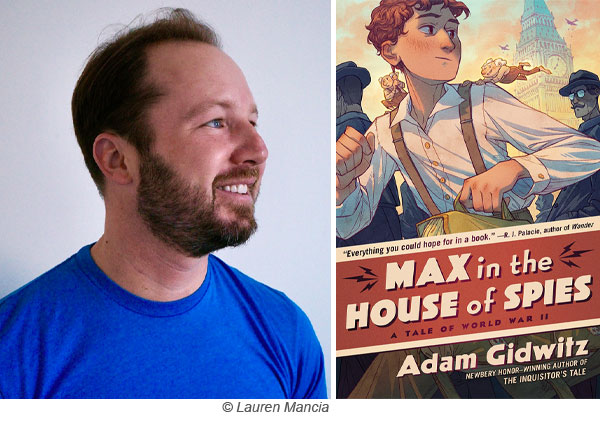
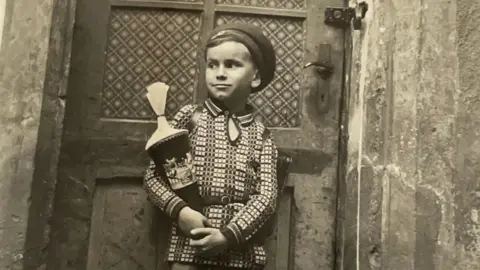
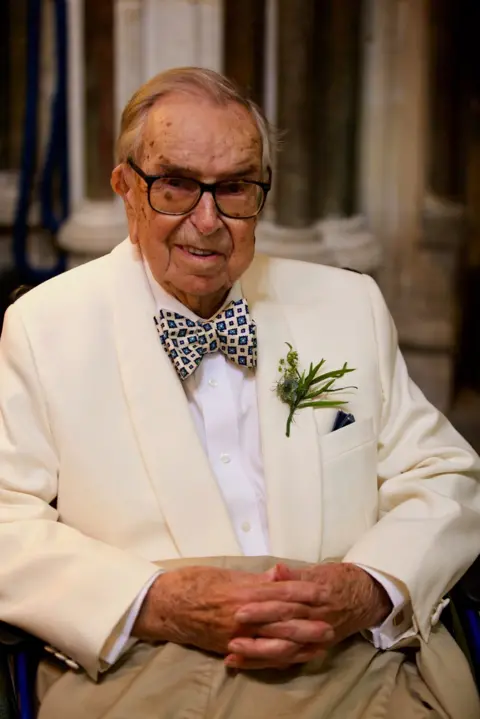
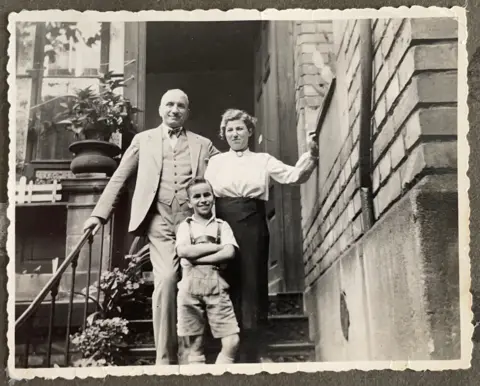
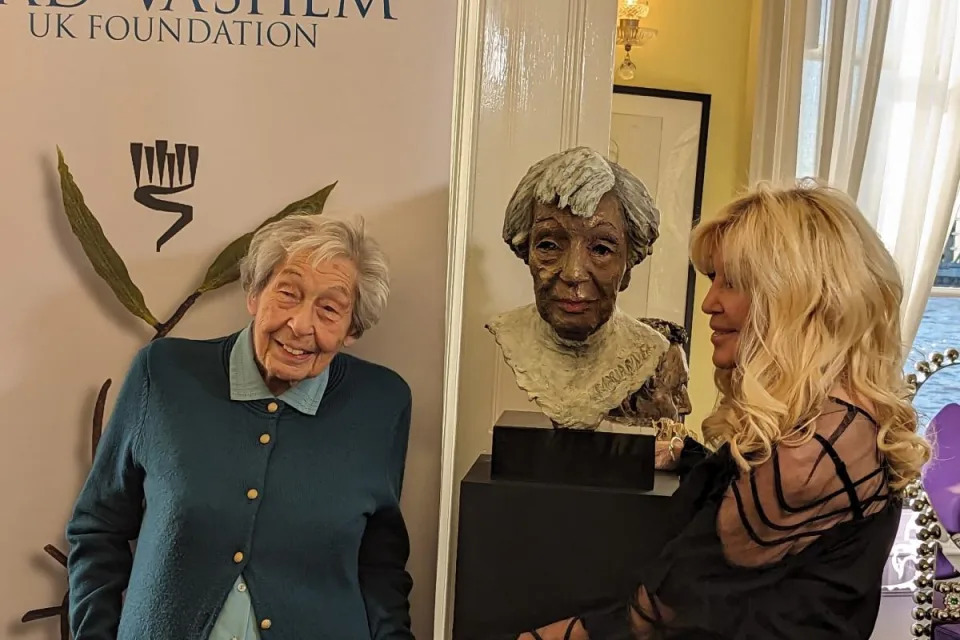
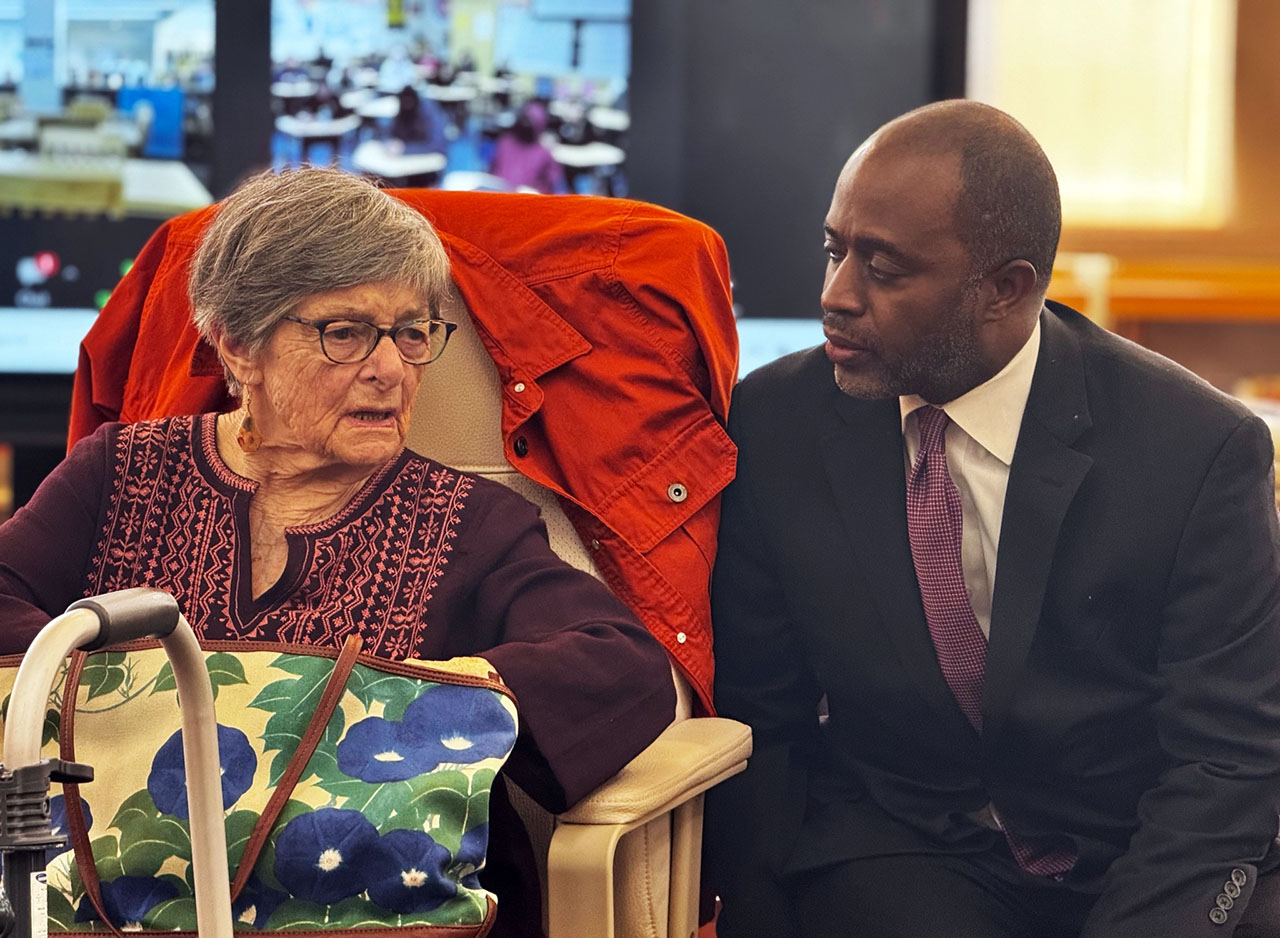
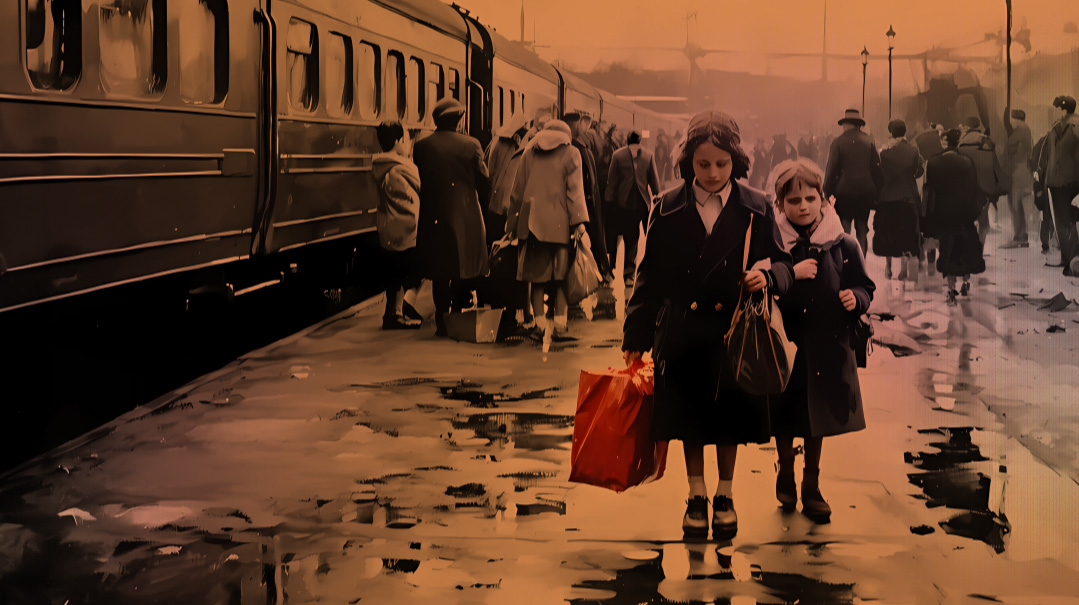
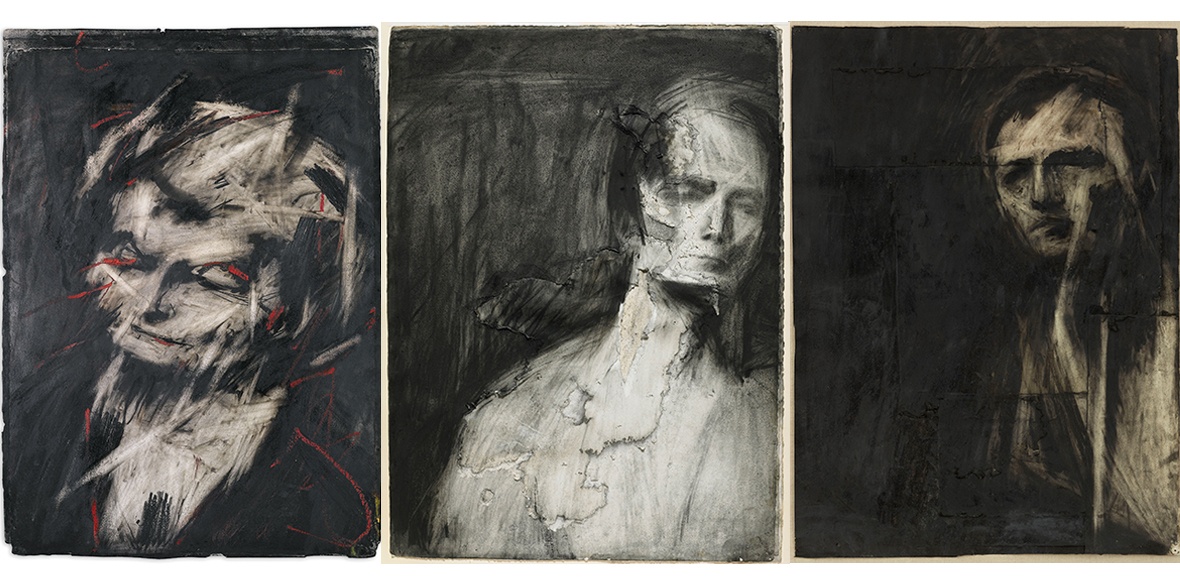
/bnn/media/media_files/714e77f01bd033831cc44f9193aab7801c06fe1eb52aa5c733489b1df6d622b9.jpg)
